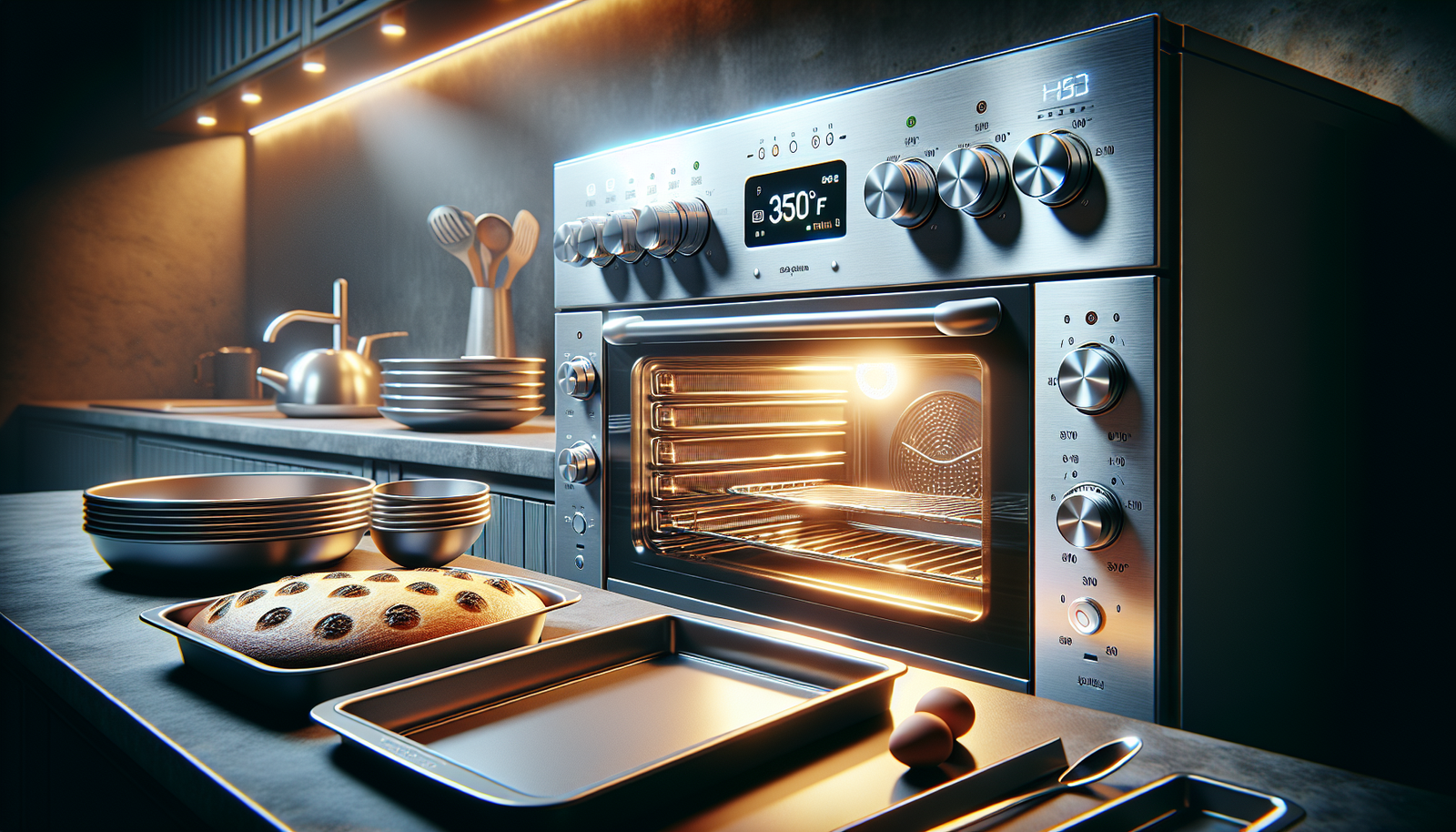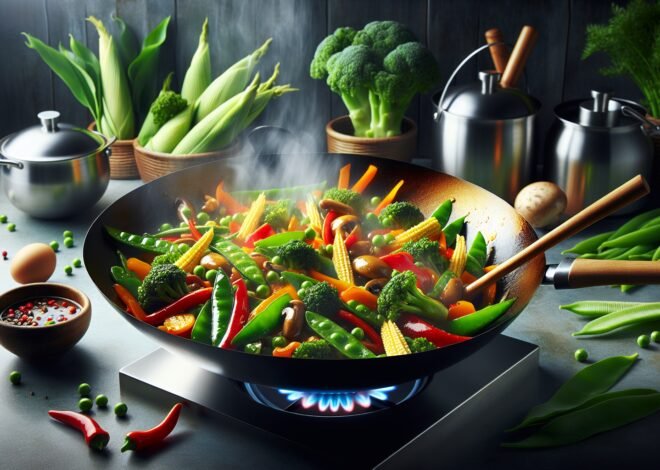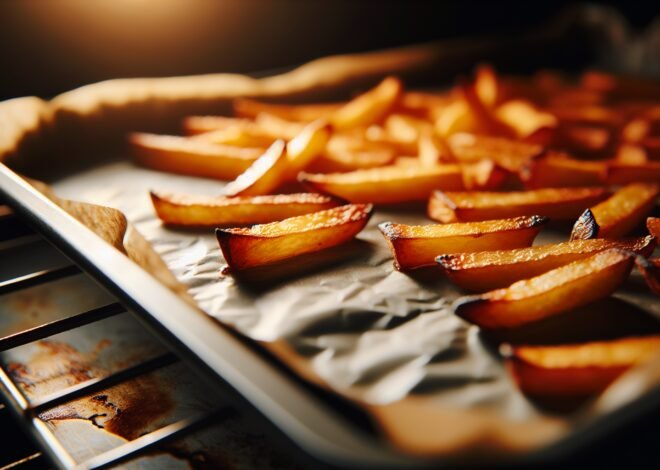
How to Adjust Oven Temperatures for Different Types of Baked Goods
Baking isn’t one-size-fits-all, especially when it comes to temperature. Some recipes need a slight adjustment based on your oven type. Learn when and how to adjust baking temperatures to ensure the best results, whether you’re using an older model or a high-end convection oven.
Why Oven Temperature Matters in Baking
Understanding how oven temperature affects your baking is crucial. It can mean the difference between a perfectly golden cake and a sunken disappointment. Let’s dive into why the right temperature is key to baking success.
Impact on Rising and Texture
Oven temperature significantly influences how your baked goods rise and their final texture. When the oven is at the correct temperature, ingredients like baking powder and baking soda activate optimally. This ensures your cakes and breads rise beautifully.
A consistent heat setting allows proteins and starches in flour to set properly. This results in a fine, airy crumb and a perfect crust. If the temperature is too low, your batter might not rise adequately, leading to denser results. Conversely, too high a temperature can cause the outside to cook too quickly. This leaves the inside undercooked.
Effects of Incorrect Temperatures
Baking at the wrong temperature can dramatically affect your outcome. It can lead to over-browning or undercooking. Cakes can become dry and crumbly if baked at too high a temperature. Breads might remain doughy in the middle if the oven’s too cool.
Incorrect temperatures can also alter the flavor. Caramelization and Maillard reactions develop flavors in baked goods. These processes rely heavily on proper heat. When temperatures stray from the recipe, these reactions may not occur as intended.
Different Needs for Different Recipes
Every recipe has its own temperature requirement. Delicate pastries need precise heat control for flakiness, while dense bread requires a gradual temperature change. Cakes often demand a steady, moderate heat to bake evenly.
Understanding the specific needs of your recipe helps you adjust the oven accordingly. Adjusting the temperature correctly can enhance flavors and textures. This results in a final product that is both visually appealing and delicious.
Common Temperature Adjustments for Baked Goods
Baking isn’t always straightforward, and sometimes adjustments are necessary. Understanding how to tweak oven temperatures can refine your results. Here’s a guide to adjusting temperatures for various baked goods.
Adjustments for Cookies and Cakes
Cookies and cakes have their sweet spot when it comes to temperature. For cookies, a slightly higher temperature can create a crispy exterior while keeping the center chewy. Typically, baking at 350°F to 375°F works well.
Cakes often require a more gentle approach. An oven set to 325°F to 350°F allows cakes to rise evenly and remain moist. If your cakes tend to dome, try lowering the temperature by 25°F and extending the baking time slightly.
Lowering Temperature for Bread
Bread baking is an art that often benefits from lower temperatures. This allows the dough to rise slowly and develop more flavor. For lighter breads, start at a higher temperature, around 425°F, then lower it after 15 minutes.
Sourdough and whole grain varieties often bake well at 375°F. This encourages a thick, hearty crust without overcooking the interior. Experimenting with slightly lower temperatures can enhance the bread’s texture and taste.
Increasing Heat for Pastries
Pastries thrive under higher heat. This encourages rapid steam production, crucial for flaky layers. Set ovens between 400°F and 425°F for optimal results. This high temperature helps puff pastries and croissants to reach their full potential.
For items like choux pastry, starting at a high temperature and then dropping it ensures the dough puffs before setting. High heat creates steam quickly, expanding the dough before it firms up.
Practical Tips for Adjusting Oven Temperature
Achieving perfect bakes requires more than just setting the right temperature. Practical tips and adjustments can elevate your baking game. Here’s how to fine-tune your oven settings for the best results.
Using an Oven Thermometer
Relying solely on your oven’s built-in thermostat can mislead you. Many ovens have inaccurate temperature readings. An oven thermometer provides a precise measure of the actual heat inside.
Place the thermometer in the center of the middle rack. Allow the oven to preheat fully before checking the reading. Adjust the dial as needed to reach your desired temperature. This small tool makes a big difference in achieving consistent baking results.
Changing Rack Positions
Rack placement affects how heat circulates around your baked goods. Place items on the middle rack for even heat distribution. This is particularly important for cakes and cookies.
For items needing a crisp bottom, like pizzas or pies, bake on a lower rack. This provides direct heat to the base. Conversely, delicate items prone to burning should be set on the upper rack to avoid excess browning.
Avoiding Frequent Door Opening
Maintaining a stable temperature is vital for successful baking. Each time the oven door opens, heat escapes. This can cause significant temperature fluctuations, impacting how your goods bake.
Resist the urge to peek at your creations too often. Use the oven light and window to monitor progress. If necessary, open the door briefly and gently to minimize temperature loss.
Conclusion
Adjusting oven temperature based on your baking needs is key to ensuring consistent and reliable results. Every recipe has different temperature requirements that affect texture, rise, and doneness, especially in delicate baked goods like pastries or bread. For example, lowering the temperature can help maintain moistness, while higher temperatures encourage browning. Knowing when and how to adjust temperatures makes it possible to customize recipes to your liking or accommodate any quirks in your oven’s heating. This skill can greatly improve your baking success, creating perfectly baked treats every time.
FAQ
How can I adjust oven temperature for baking?
To adjust oven temperature for baking, first, use an oven thermometer to check accuracy. If it differs from the set temperature, recalibrate your oven settings. Adjust recipes by 25°F (or about 15°C) if using a convection oven, as they cook more evenly.
Why is temperature crucial in baking?
Temperature is crucial in baking because it affects the texture and structure of baked goods. Precision ensures cakes rise properly, cookies bake evenly, and pastries achieve ideal flakiness. Inconsistent heat can lead to undercooked centers or burnt edges.
How do I convert temperatures between Fahrenheit and Celsius?
To convert Fahrenheit to Celsius, subtract 32 from the Fahrenheit temperature, multiply by 5, then divide by 9. To convert Celsius to Fahrenheit, multiply the Celsius temperature by 9, divide by 5, then add 32. Use online converters for quick results.
When should I lower baking temperatures?
Lower baking temperatures when using dark or non-stick pans as they absorb heat faster. Reduce heat for delicate baked goods like custards or meringues to prevent overcooking. Adjust for recipes requiring longer baking times to avoid burning.
What’s the impact of increasing baking temperature?
Increasing baking temperature speeds up cooking but risks uneven baking. Cakes might rise too quickly and collapse, while the exterior of cookies could burn before the center is done. Use caution, and adjust baking times accordingly.
Does altitude affect baking?
Altitude affects baking by altering air pressure, which impacts ingredient behavior. At higher altitudes, reduce baking powder, sugar, and liquid. Increase the oven temperature slightly to counteract rising issues and ensure even baking.











